WHERE IS ATLANTIS?: PILLARS OF HERACLES, A SEA OF MUD AND MONSTERS IN THE DEEP
For the ocean there was at that time navigable; for in front of the mouth which you Greeks call, as you say, 'the pillars of Heracles,' there lay an island which was larger than Libya and Asia together... [Tim. 24e].
While some aspects of Plato's Atlantis myth can be explained as exaggerations - most notably the vast size of the island and the span of time between its destruction and the floruit of Solon, Plato is quite specific with regards to Atlantis' location: -
These locations are easily gleaned by reference to the pre-existing corpus of Greek literature and mythology from prior to Plato: -
THE PILLARS OF HERACLES
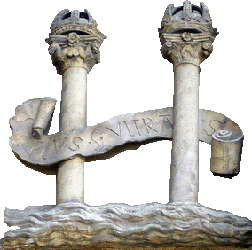
The Pillars of Heracles, a mysterious far-off location (from the ancient Greek perspective) commonly identified with the extremities of Europe and Africa on either side of the narrow Straits of Gibraltar, feature prominently in Plato's tale of Atlantis.
The Atlantean invasion precipitated a conflict between the peoples outside (west of) and inside the Pillars, which initially went well for Atlantis: all of the land up to Tyrrhenia in modern-day Italy and the borders of Egypt were subjugated, and eventually the ancient Athens stood alone against the might of the western superpower.
But where - and what - were these "Pillars"? Is there any dispute as to their location at the time Plato was writing?
THE GREEKS GO WEST
MAP: GREEK HEROES IN THE ADRIATIC AND SICILYFrom a very early period in their exploration of the seas around their homeland, the ancient Greeks appear to have assigned twin pillars to locations regarding as marking the furthest possible point of exploration.
Perhaps the earliest of these, which are described in the De Mirabilibus Auscultatonibus [81], a work ascribed (wrongly) to Aristotle, were to be found in the northernmost reaches of the Adriatic Sea, either at the mouth of the River Po or just south of Istria: -
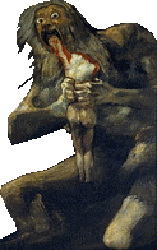
The Adriatic may well be the original Cronian Sea, which takes its name from the Titan Cronus, the father of Zeus who was deposed as king of the gods but, after a time in Tartarus, reprieved and placed in the far west. Cronus himself, the myth tells us, had previously usurped the throne from his own father, Uranus, whom he emasculated with an adamantine sickle. This sickle came to be regarded as having fallen at one of several places, including the island of Corfu, or else in Sicily, at Messina or Trapani.
Messina, of course, lends its name to the famous and turbulent strait at the narrowest point between Sicily and the Italian mainland, which appears to be a precursor of the Pillars of Heracles. In this instance, however, the hero most closely associated with the strait in early times appears to be the figure of Orion, an early hero who, by the time the first myths were written down, was beginning to be eclipsed by the pan-Hellenic Heracles. Fragment 5 of the Hesiodic Astronony states: -
This feat of marine management is echoed in traditions associated with the Pillars: Diodorus Siculus [4.18.4-5] states the following: -
Already, by the middle of the 8th century BC, about half a century before Homer and Hesiod were active, the Greeks were already expanding their horizons well beyond the Strait of Messina.
ENTER HERACLES
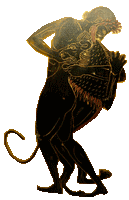
Already by the time of Homer and Hesiod, Heracles was taking on his familiar form as the Greek hero par excellence. His associations with Sicily were known already to Hecataeus (c.500 BC) [F 76; F 77], and came to be associated with the return journey from Geryon's domicile on Erytheia. Other tales have him crossing the Strait of Messina on the back of a bull.
To some extent though, it can be argued that Heracles' relationship with Sicily, Eryx in particular, was a development of the late 6th century: in about 510 BC, the Spartan prince Doreius led an attempt to colonise Heraclea Minoa on the south west of the island. Part of his claim was founded on Eryx's yielding up sovereignty to Heracles as a result of his defeat by the hero.
Heracles' other Sicilian feats (along with other features of his mythology) were possibly annexed from Orion: the Tanagran poetess Corinna ascribes to Orion fifty sons by nymphs, probably the daughters of Cephissus, a Boeotian river god, while Heracles manages a similar feat of virility at the court of Thespis, another Boeotian king.
Heraclea Minoa, furthermore, was reputedly the site of the demise of the famous Cretan thalassocrat Minos, who we already met in connection with Daedalus, who fashioned the pillars on the Electrides.
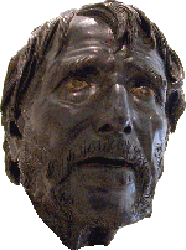
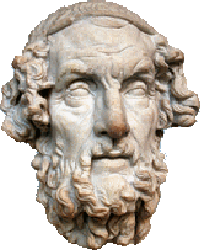
HOMER, HESIOD AND THE PILLARS IN MYTH
By around 700 BC, the first Greek mythological tales were being committed to writing, with later writers crediting two poets in particular with great works of surviving literature: Homer and Hesiod. They make use of the trope of pillars in their oeuvres.
In these instances, the pillars appear to represent the borders between this world and the otherworld, and are associated by Homer with the Titan Atlas, while Hesiod mentions them in connection with the dread goddess Styx: -
Thus, support can be found in the earliest Greek literature not only for the location of pillars separating the land of the living from the unknown expanses beyond in the furthest reaches of the west, but also a figure - in this instance the "standard" Titan - known as Atlas in the same region. The attribution to Heracles would come somewhat later.
STESICHORUS AND THE GERYONEIS: RAISING THE PILLARS OF HERACLES?
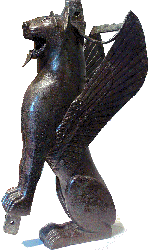
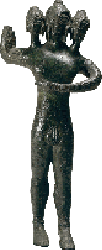
Most probably a slightly-older contemprary of Solon - who Plato credits with bringing tidings of ancient Athens and its vast, imperious enemy to the quarreling city of his birth during the 6th century - Stesichorus was one of the early writers from the West Greek colonies, being closely associated with the settlement at Himera in Sicily. He is best known for having adapted the great mythological sagas normally celebrated in epic poetry to the relatively new form of Greek lyric, which was then developing under the auspices of the likes of Alcman and the two great bards of Lesbos, Sappho and Alcaeus.
Among his many works, Stesichorus produced a work dealing with Heracles' battle with the three-bodied ogre Geryon, with surviving fragments showing that he placed this showdown somewhere in the region of the Tartessus: he refers to the birth of Eurytion, Geryon's cowherd, as having taken place: -
This immediately brings to mind Hesiod's description of the home of Styx, "glorious house vaulted over with great rocks and propped up to heaven all round with silver pillars," where a tenth portion of Oceanus "flows out from a rock."
By now, the mythological scenes of the furthest occident are placed in a barely-known but real location.
Stesichorus appears a likely source for the notion of Heracles' erection of pillars in this region: pseudo-Apollodorus states that the hero "proceeding to Tartessus [...] erected as tokens of his journey two pillars over against each other at the boundaries of Europe and Libya" shortly before his encounter with Eurytion and Geryon [2.5.10].
BOEOTIAN EXPLORERS IN NORTH-WESTERN AFRICA?
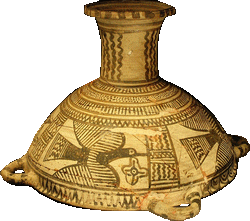
The work of pseudo-Scylax, which was written about the same time as the Timaeus and Critias, according to Duane W. Roller, suggests a Boeotian and Central Greek presence in north-west Africa outside the Pillars, which was by and large forgotten by that stage.
Heracles was a hero with Boeotian - specifically Theban - connections: his early exploits (as recorded by pseudo-Apollodorus) include the aforementioned squiring of the fifty daughters of the king of Thespiae and the defeat of Erginus, the king of Minyan Orchomenus, who held Thebes under subjection.
He was also associated with other regions of Central Greece, most notably Doris, from whence came his descendants to the Peloponnese (with the aid of the Theban Theras), while his death was localised on Mount Oeta.
Thus, perhaps these obscure settlers were responsible for plotting the exploits of Herakles on the map of the furthest west.
HECATAEUS
MAP: THE PILLARS OF HERACLES IN HECATAEUS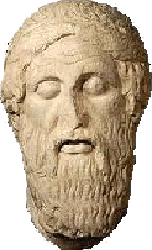
The first Greek to specifically mention Pillars of Heracles is the Milesian geographer and historian Hecataeus, who was active at around the turn of the sixth and fifth centuries BC.
In spite of his stated opinion that Heracles' encounter with Geryon took place "on the mainland around Ambrakia and the Amphilochians" in north-western Greece, the fragments of Hecataeus' work which mention the Pillars of Heracles indicate a location in the far western Mediterranean, suggesting that this identification was already a commonplace by about 500 BC.
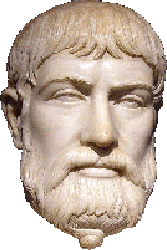
PINDAR
Shortly after Hecataeus, the poet Pindar - best known for his poems celebrating the aristocratic victors at the various Panhellenic athletic games - makes use of the archaic concept of the Pillars as a species of liminal boundary, separating the known and orderly world of the Mediterranean from the domain of sea monsters beyond in three of his odes, while a fourth uses "Gadeira" in a similar sense: -
Pindar's mention of mud is echoed in a number of other sources, and brings to mind Plato's statements that "the island of Atlantis [...] now lies sunk by earthquakes and has created a barrier of impassable mud which prevents those who are sailing out from here to the ocean beyond from proceeding further" [Crit. 108e-109a], and "the island of Atlantis in like manner was swallowed up by the sea and vanished; wherefore also the ocean at that spot has now become impassable and unsearchable, being blocked up by the shoal mud which the island created as it settled down" [Tim. 25d].
The statement that Heracles fought sea monsters would refer to his combat against Ladon during his eleventh or twelfth labour, which took him to the west in search of the apples of the Hesperides, with this and other western adventures providing the backdrop of Heracles' construction of the pillars, and the presence of such creatures in the region also appears in Pliny the Elder, who states that the Fortunate Islands "are greatly annoyed by the putrefying bodies of monsters, which are constantly thrown up by the sea" [37].
Clearly, Plato is working with and building on existant material to develop his notion of Atlantis.
The region of Tartessus was still little-known by the Greeks, though Herodotus mentions Phocaean [1.163] and Samian [4.152] expeditions (the knowledge gained during which is a likely source for Hecataeus' knowledge of the region).
The area was much better known to the Phoenicians, who had settled in the area around the Straits of Gibraltar and beyond in the centuries prior to the Persian Wars, which form the backdrop to much of Herodotus' history. It has been posited that the notion of a shallow sea beset by seaweed and monsters outside the Pillars represents Phoenician propaganda aimed at deterring Greek ambitions in the region.
The Phocaean and Samian contacts with Tartessus have been dated to a narrow window of opportunity for the Greeks between the fall of the Phoenician cities to Persia in c.536 BC and the rise to hegemony of Carthage, newly reinforced by refugees, during the earlier part of the 5th century. Carthage entered into a treaty with "Rome" in 509 BC which allocated Sardinia and Sicily as exclusively Carthaginian spheres of interest. The lack of mention of Spain as being tabu to Rome is likely due to the continued existence of Tartessus, which was destroyed by Carthage and Gadeira, probably in the first half of the 5th century.
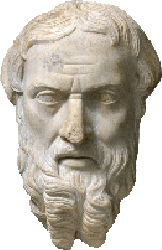
HERODOTUS
Herodotus is one of the best-known (if not necessarily highest-regarded) of the ancient Greek historians. His world history attempts to cover all regions then known to the Greeks, and makes several statements about peoples living outside the Pillars of Heracles. He mentions Libya outside the Pillars twice [4.43; 4.196] and Europe on three occasions [2.33; 4.8; 4.152]: -
By the time of Herodotus, the association of the Straits of Gibraltar region and the Pillars of Heracles was well established. To quote Thomas Braun: "Herodotus [...] saw no need to explain the name and knew that Gadir lay beyond (4.8)."
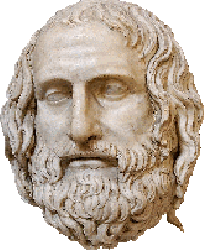
EURIPIDES
The next writer we will consider is a contemporary of Herodotus, the youngest of the great Athenian tragedians Euripides, who, in his Hippolytus also refers to pillars at the western end of the known world, though - echoing Homer and Hesiod - he names them as "the great Pillars of Atlas (τερμόνων τ᾽ Ἀτλαντικῶν)" at "the farthest ends of the West" [3], the "turbulent waters" beyond which are off limits to travellers [742-747].
HERODORUS
Herodorus, a sophist from Heraclea on the Pontic coast of modern Turkey, was a prolific writer on mythography, whose fragments show that he made a number of contributions on the subject at hand - as well as as well as some interesting and bizarre nuggets treated elsewhere.
Firstly, on Iberia, Herodoros notes that: "[t]here are two groups of Iberians," of whom "one is close to the pillars of Herakles," before enumerating the various Iberian tribes of the south-western portion of the Iberian peninsula [BNJ 31 F 2a]: -
Of these, the Cynetes are also known to his near-namesake Herodotus, while the Elbusinians or Elbysinoi and Mastienians are known to Hekataeus [BNJ 1 F 41] (NB the former, here termed "Elbestioi," are called "a people of Libya" by Stephanos of Byzantion, Ethnica, s.v. ᾽Ελβέστιοι, who refers to this fragment of Hecataeus).
Herodorus also provides an astronomical explanation of the Pillars which states that Heracles "became a prophet and natural philosopher when he received from Atlas the Phrygian the pillars of the cosmos," signifying that the hero "received by instruction the knowledge of the heavenly bodies" [BNJ 31 F 13, apud Clement of Alexandria, Stromateis, 1.15.73.2].
This version of events is developed further in other works: Diodorus Siculus has Atlas teaching Heracles the mysteries of the cosmos in gratitude for the rescue of his daughter from pirates [3.60.2; 4.27.4], while Cornutus regards the Titan as synonymous with the cosmos [On Greek Theology, 25]. Furthermore Servius, in his commentary on the Aeneid, credits Atlas with having enabled Heracles to carry out his monster-killing activities [1.741].
Slightly off topic: Atlas' ethnic epithet of Phrygian [Ατλαντος τοῦ βαρβάρου τοῦ Φρυγὸς] would appear to stem from his associations with Tantalus - generally regarded as Atlas' son-in-law - who is often associated with that region.
There may also be an element of local patriotism at play here: the legendary founder of Herodorus' home city of Heracleia was Lycus, king of the Mariandynians, who was gifted the region by either Heracles' party or the Argonauts after the defeat of the Bebryces, a "Thracian" tribe whose name may signify some association with the Phrygians.
INTO THE 4TH CENTURY
The Periplus ascribed to Scylax of Caryanda is a document likely contemporary with Plato's writing the Timaeus-Critias. The document appears to be based in no small part on older sources, with Hecataeus likely being a key font of information.
It begins in the following fashion: -
As shown in the quote above, pseudo-Scylax's scheme for the construction of the document was a guide to the coasts of the Mediterranean, beginning at the European Pillar and continuing on past the African Pillar down along the coast of that continent. As these pillars are placed immediately to the west of the Iberians [2] and the Carthaginian coast of Libya [111], adjacent to two islands called Gadeira [1; 111 - "[t]hese are islands towards Europe; of these, one has a city: and the pillars of Herakles are by these, the one in Libya low, but the one in Europe high. And these are capes right by one another; and these are apart from one another a voyage of a day."], it is indisputable that the Pillars were believed to have been located on or near the Strait of Gibraltar.
Interestingly, the quote above continues with the following description: -
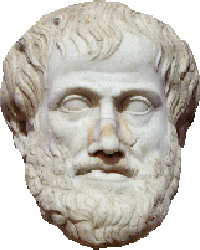
The Pillars are used in an almost proverbial manner during the 4th century as a far-flung locale: Aristotle [Rhetoric 2.10.5] and Isocrates [Panathenaicus 250] both make use of this device.
In addition, the latter [To Philip 122] suggests that the Pillars were set up in part "to mark the bounds of the territory of the Hellenes" by Heracles after his conquest of Troy. As the Greeks had long since colonised the coast of the Black Sea, the logical conclusion to draw from this notice is that far western Pillars are intended. Indeed, Plato concurs in defining the Greek world as stretching "between the pillars of Hercules and the river Phasis" [Phaedo 109ab].
Much later, Claudius Aelianus [Various History 5.3] also records that the Pillars of Heracles were, according to Aristotle, formerly known as the Pillars of Briareus, the hundred-handed son of Gaia, who guarded the Titans in Tartarus [Theogony 734-735] (and later the sleeping Cronus on a far-western island), whilst Cronus was also associated with the Pillars: the Croatian scholar Tomislav Bilić, reviewing the tradition by which the name of Briareus came to be attached to the Pillars, notes that "initially they were called the Pillars of Cronus."
Bilić also reviews the tradition which places this leader of the Titans in the west, ruling over the blessed dead, which appears also in Pindar (Pindar's 2nd Olympian Ode [70-77] mentions a "Tower of Cronus" in the ocean).
Notes Bilić:-
Another writer believed to have written some time during the 4th century (generally regarded as towards the end) is the mysterious Palaephatus, author of the paradoxography known, among other English renditions, as On Unbelievable Stories.
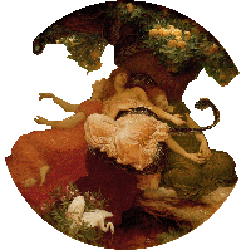
In this text (which rather clumsibly seeks plausible explanations for various motifs known from Greek mythological tales), Palaephatus follows the likes of Hecataeus in locating Heracles' adventures much closer to home than had become standard: Geryon is made a man of renown from a city on the Black Sea coast [24], while the "golden apples of the Hesperides" are actually sheep belonging to a man from the region of Miletus [18].
Nevertheless, there is little cause to suspect that Palaephatus had any other than the Straits of Gibraltar in mind when treating the Pillars of Heracles, which are only mentioned in terms of Cerne - a Carthaginian settlement associated with Hanno - being beyond them [31].
"PILLARS OF MELQART?"
The notion of "Pillars" has been suggested as having its origins in Phoenician temples to Melqart, chief deity of Tyre, who was identified in the interpretatio graeca with Heracles. Melqart was represented in his temples by two stelae or pillars, and a major temple to Melqart stood in the city of Gades, replete with "bronze pillars of eight cubits," in Strabo's account [3.5.5]. There, Strabo cites the histories of the Gaditanians themselves in the following manner: -

By extrapolation, the pillars came to be loosely identified with the area's major nautical landmark - the promontories on either side of the Straits - and associated with Heracles who either broke through the straits to afford access of Atlantic waters into the Mediterranean or else narrowed them to prevent the ingress of sea monsters.
Complementary eastern pillars, ascribed to Dionysus, were also noted by pseudo-Apollodorus [3.5.2]. A temple to Poseidon, mentioned in Hanno's account and pseudo-Scylax, was very likely originally dedicated to Melqart, who was identified additionally with Poseidon in terms of his nautical aspect.
On the other hand, in light of the information given above, it is equally probable that the concept of pillars or columns marking the western bounds of the world already existed in Greek mythology.
As such, the "Pillars of Heracles," which came to be identified with the Strait of Gibraltar, would never be found.
OTHER "PILLARS OF HERACLES?"
Additionally, whilst a number of other sites with pillars are named by Strabo [3.5.5], he is in no doubt that the Pillars of Heracles (which, he also notes, were also called the "gates of Gades" by Pindar) should be located in the region of the Straits. His major difficulty with regards to their veracity is their inability to be accurately located: -
Strabo continues, citing a variety of his forebears and the traditions of the people in the extreme western reaches of Africa and Europe: -
With regards to the other "Pillars" Strabo mentions, far from being suggested as alternative locations for Heracles' monuments (as some researchers would suggest), Strabo names names: -
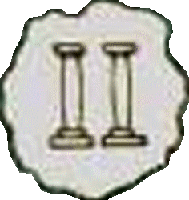
Strabo, as we can see above, also mentions "two isles, one of which they call Hera's Island" near the Pillars [3.5.3, see also 3.5.5 where Artemidorus is cited as a source], which to some measure corroborates pseudo-Scylax' account of two islands at Gadeira. The notion of the Pillars of Heracles being located on islands is presumably based upon the islands on which Gades was located.
Thus, there is no indisputable evidence to suggest locating the Pillars of Heracles anywhere other than the Strait of Gibraltar in the classical canon. The only other Pillars of Heracles cited in literature appear in a somewhat cynical and ambiguous note in Tacitus' Germania [34] - which places them well outside the Mediterranean and much further north of the Frisian coast: -
... and in Maurus Servius Honoratus' commentary on Virgil's Aeneid, which locates a second set of Pillars of Heracles in the region of the Pontus, complementing those in Spain.
Meanwhile, the Tower of Pelorus was known as the Tower of Pelorus (and was likely associated with Orion rather than Heracles), and the Altars of the Philaeni (or Philaenus) were known as just that. Neither marked the furthest reaches of exploration after the middle of the 8th century at the latest and the Altars, rather than a boundary between the known world and the great unknown, appear to have been a demarcation between the spheres of influence of Carthage and Greek Cyrene. There is neither evidence nor, indeed, suggestion (in ancient times at least) that either were ever known as Pillars of Heracles.
THE MUDDY SEA: THE CONCEPT OF THE SHALLOW, IMPASSABLE ATLANTIC
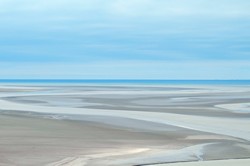
Plato's description of a shallow Atlantic, which he explains as the result of the sinking of the island, has a number of precursors and successors in ancient literature. Plato is, however, unique among extant sources in that he is the only one to proffer a potential explanation for the source of these shallows. It is this suggestion, developed rationally, which made his suggestion of a major sunken island off the western side of Europe and Africa compelling to later thinkers.
Soon after Plato, his one-time student Aristotle would write [Meteorology 2.1]: -
Herodotus notes three attempts to circumnavigate the continent. A Phoenician expedition chartered by Necho of Egypt was apparently successful [4.42], but the other two - that of "Sesostris" [2.102] and Sataspes on the orders of Xerxes [4.43] - both failed, with the reasons given being the impassability of the sea.
First, Sesostris, a composite figure whose manifold accomplishments seem to be based on any number of successful pharaohs of the Middle and New Kingdoms. He: -
It is likely that this expedition never made it into the west: Pliny the Elder [6.36], citing Ephorus, notes the existence of small islands rather than shoals: -
Sataspes meanwhile claims that he got as far as the land of a "dwarfish race, who wore a dress made from the palm-tree," thought could get no further "because the ship stopped, and would not go any further." Xerxes is unamused and has Sataspes impaled for failing to carry out his orders. The "dwarfish race" are presumably identical to that encountered by the Nasamoneans at the apogee of their overland expedition into West Africa [2.32]: -
This information is couched in terms of a conversation between a group of Cyrenaeans and Etearchus, the king of the Ammonians, at the oracle of Siwa, where the source of the Nile was discussed. Etearchus believes that the river in the account is a western branch of the great river, answerable to what the Greeks believed about the Danube having a mouth in Istria and a concept which appears as late as Muḥammad al-Idrīsī.
Though this speculation has little bearing on reality (Rawlinson suspects that the passage contains a reference to the Niger) or, on the face of it, the subject at hand, it was off this coast that Sataspes claimed his fleet found themselves unable to proceed. It was also in this general region that the Carthaginian admiral Hanno was forced to turn back, though, in his case, this was due to lack of provisions.
As a result of these and other accounts, Strabo, summarising previous efforts to sail around Africa, makes the following observation: -
Strabo, who is discussing Homer's sundered Ethiopians [Odyssey 1.22-24], dismisses the existence of an isthmus as a potential solution, and instead suspects that all countries bordering the southernmost reaches of the ocean were anciently termed Ethiopia [1.2.27].
The southerly location for the blockages also contrasts with a notice in Aristotle's Meteorology [2.1], which states that the northern seas are shallower than those of the south: -
Writing in the same century as Herodotus, Pindar places "the streams of the shallows" and "monstrous beasts in the sea" beyond the Pillars of Heracles [Nemean 3:20-26], whilst Euripides also attests to the western ocean being blocked [Hippolytus 742-747]: -
The origins of Plato's description of the sea which cannot be passed by ship is perhaps the Phoenician Himilco. The account of Himilco's voyage appears in the work of Avienus [114-129; 380-389; 404-415], and describes Himilco's successful attempt to garner ties in north-western Europe being hampered by a variety of factors: the sea has many sandbars [125-126], seaweed [122] and sea monsters [128-129], and there are long periods with no wind [120], and vast amounts of fog [380-389]. Of these, seaweed and sea monsters are features which recur elsewhere, and the sandbars evoke Plato's shoals [Tim. 25d; Crit. 108e-109a].
A likely solution which has been proposed is that the dangers present in the Atlantic were talked up or invented by the Carthaginians as a means to deter Greek exploration, though the influence of and need for such propaganda may be exaggerated, and ignores areas where the dangers listed were indeed present. Nevertheless, Strabo does record an incident postdating Plato in which a Phoenician captain deliberately beached his ship, causing his Roman pursuers to run aground [3.5.11].
Duane Roller notes that: -
Further to the south, Marijean Eichel and Joan Markley Todd note an interesting phenomenon mentioned in the Africa Pilot: -
Though they concede that this could "be a modern phenomenon, due to the accelerated drying-up of the Sahara in modern times, there is no doubt that the same strange juxtaposition of desert and fog existed then as now."
Such a phenomenon, if present during the Classical age of the Greeks, could provide an alternative explanation of the sea of mud mentioned by Plato.
THE MONSTERS IN THE ATLANTIC
We begin with a quote from Plato's Phaedo [109c-110a]. About the sea, Plato has Socrates say the following: -
Here, Plato introduces the analogy of people dwelling on the floors of the sea, as a means to highlight the difference in perception between people from our common surface world and those of the world above.
This correlates well with a statement in the Timaeus [92b], where the origins of sea creatures are explained: -
A similar reference to pitiful sea-dwellers, though one which is much contested, appears in the fragmentary remains of the Arimaspea ascribed to Aristeas of Proconnesus [BNJ 35 F 7, apud pseudo-Longinos, de sublimitate 10.4]. In it, the author describes: -
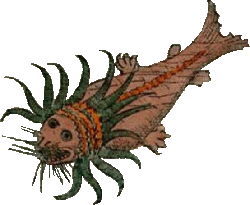
While this is often understood as a parody, with mercantile Greek navigators in the Black and Mediterranean Seas being referenced from the perspective of the landlocked Issedones, given the often outlandish nature of Aristeas' material elsewhere (for example the one-eyed Arimaspoi and their constant contention with the gold-guarding Gryphons), it is also possible to read this as a reference to actual mermen.
Therefore, the Platonic account of villains being punished through reincarnation, coupled with the notional sea dwellers in the Phaedo - who are depicted as being as much lower than humanity than humanity are in relation to the aether-breathing friends of the gods (who can be compared to Homer's Ethiopians and Phaeacians [Odyssey 1.22-26; 7.199-206, cf Phaedo 110a-111c, especially 111b: "they have sacred groves and temples of the gods, in which the gods really dwell, and they have intercourse with the gods by speech and prophecies and visions"], as well as the Hyperboreans in Pindar's Tenth Pythian Ode [29-44] - lends an aptness to Plato's placing of a continent inhabited by a people latterly "unable to bear the burden of their possessions," and "filled [...] with lawless ambition and power" [Crit. 121b] outside the Pillars of Heracles in the Atlantic Ocean.
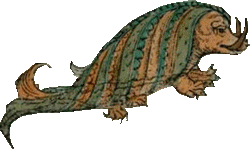
All of this suggests that there was a certain poetic justice to the destruction of Atlantis, with its submergence under the waters of the Atlantic Ocean representing a fall to a lower condition as a result of the iniquities of the populace and, more particularly, the ruling class. The souls of its inhabitants would thus be associated with these miserable sea-dwelling creatures.
However, the Atlantic was noted in a number of sources as being the domain of particularly monstrous marine creatures. Thus, what likely began as travellers' tales musing on the vastness of the ocean and its suitability as a habitat for similarly-gargantuan beasts of the deep, became, in Plato's narrative, the home of those who once were the best of humanity brought into the most base of estates.
Otherwise, the lot of the average citizen of the island of Atlas after the cataclysm was "to be a wanderer upon the earth for nine thousand years and a fool below the earth at last."
